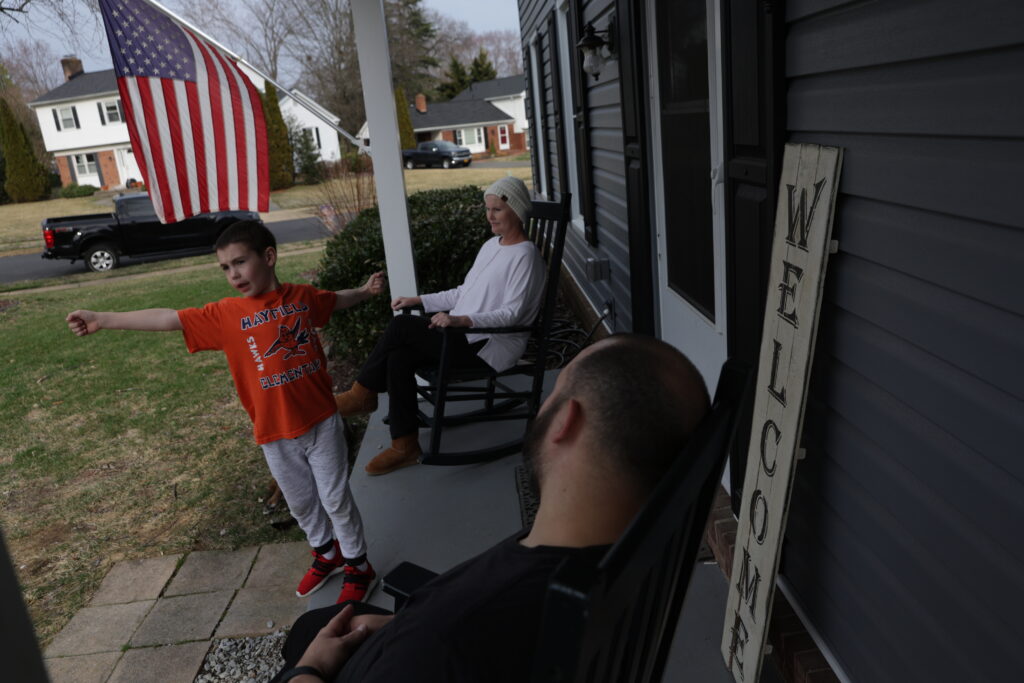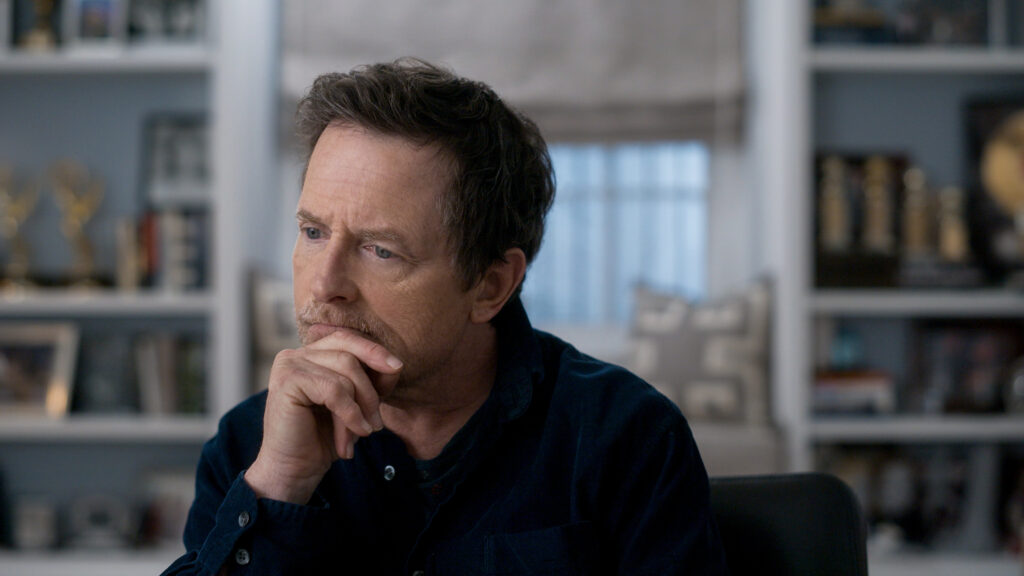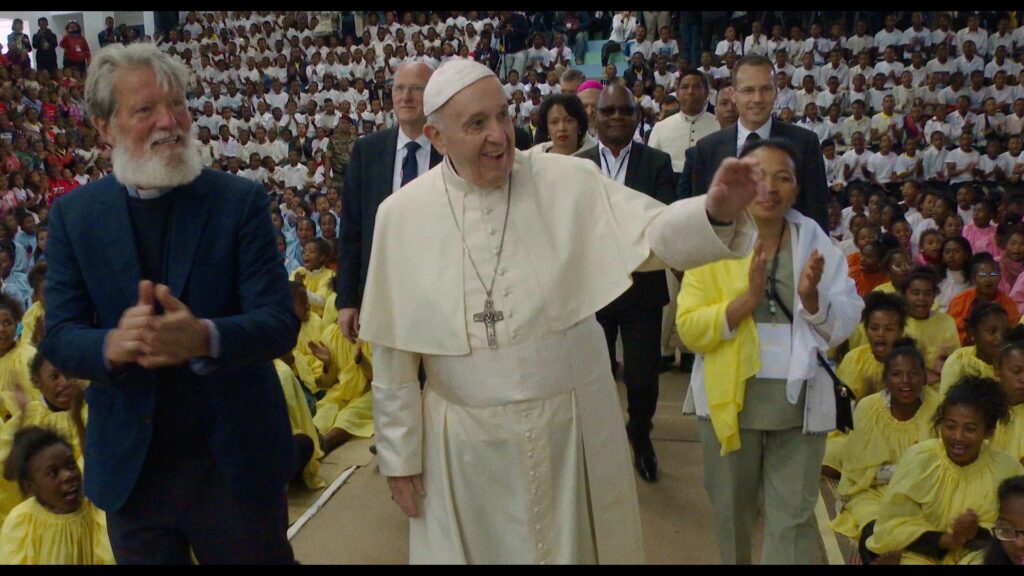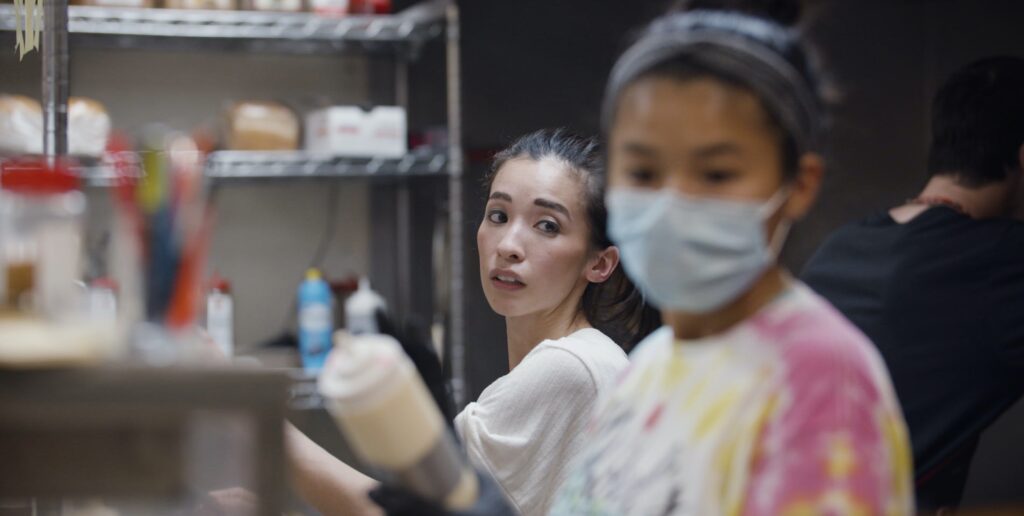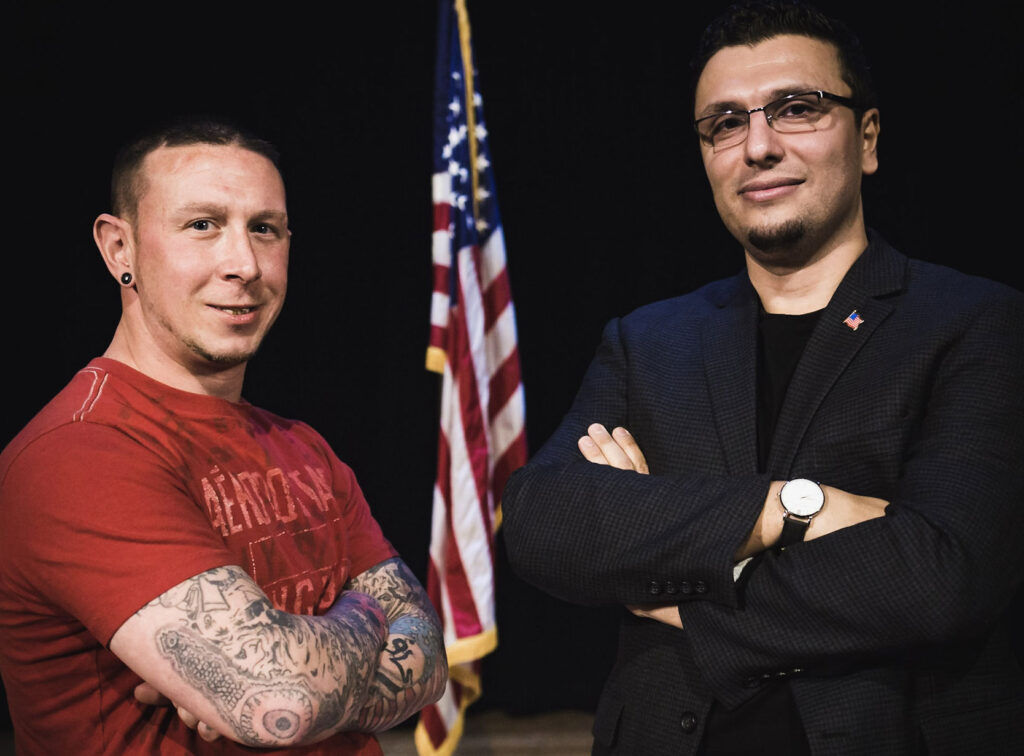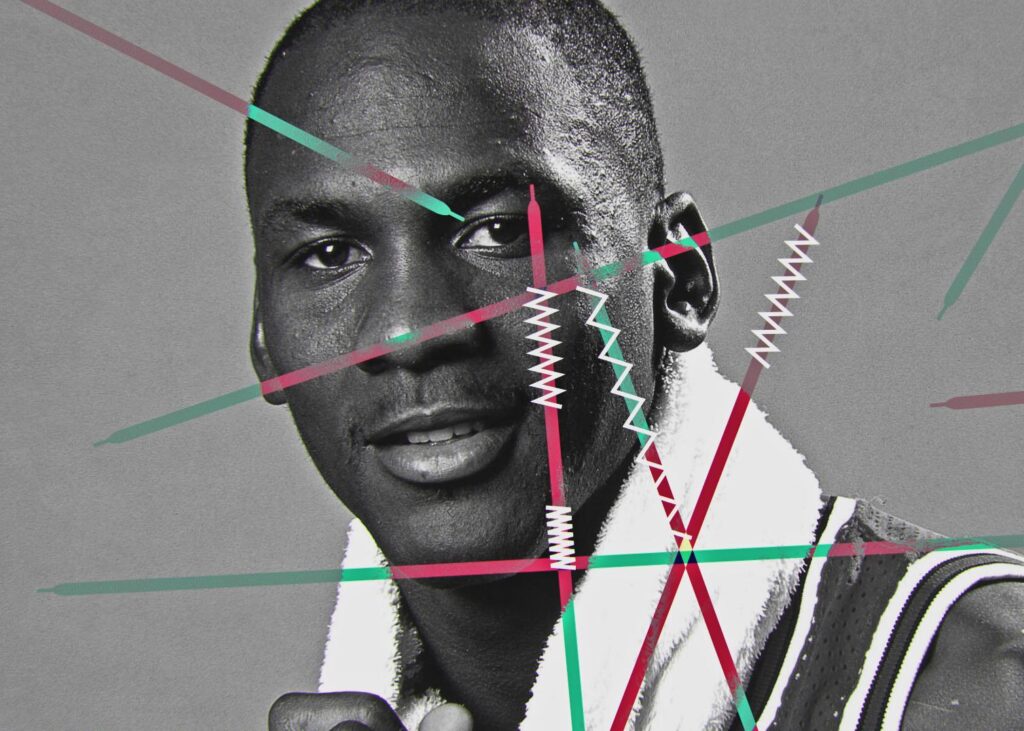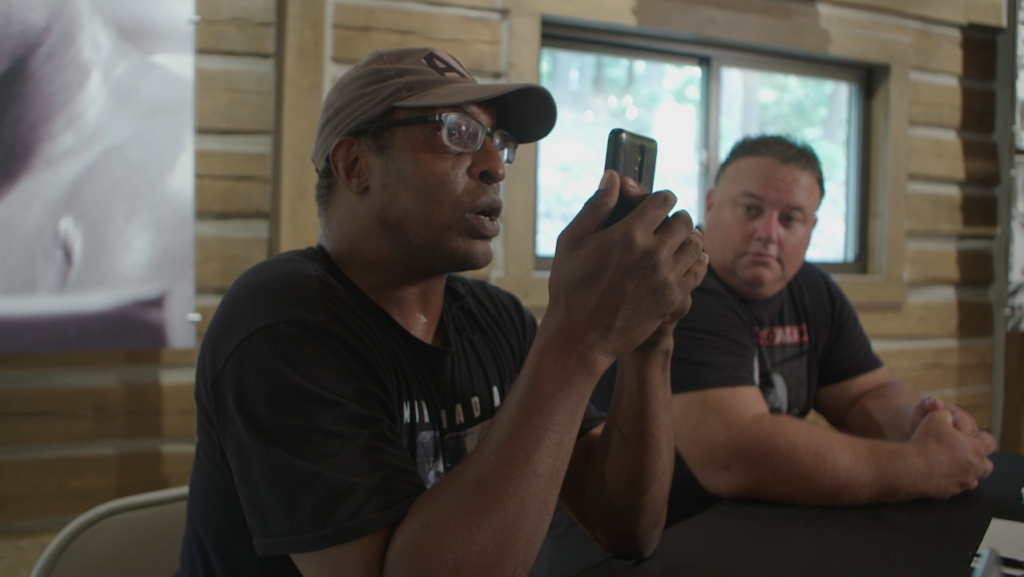May 24, 2023
by Carla Hay

Directed by Sam Green
Culture Representation: The documentary film “32 Sounds” features a predominantly white group of audio enthusiasts (with a few Asians and African Americans and one Latino) talking about how sounds and other aural experiences affect people.
Culture Clash: People have varying degrees of how much they value or pay attention to sounds.
Culture Audience: “32 Sounds” will appeal primarily to people who are fans of ASMR videos or who want to experience a movie that takes an up-close examination of sounds at various volumes.

The documentary film “32 Sounds” has a title that’s somewhat misleading because this movie is actually an abundance of more than 32 sounds. It’s more like a feature-length ASMR [autonomous sensory meridian response] video than anything that is extraordinary or groundbreaking. The movie is inconsistent in how it labels the 32 sounds that inspired the documentary’s title. Most of the anecdotes and sounds can keep viewers interested.
Directed by Sam Green, “32 Sounds” has a meandering quality in how it features interviews with various audio enthusiasts and then usually showing them reacting to or talking about whatever sounds they’ve created, recorded or are listening to in their current location. “32 Sounds” had its world premiere at the 2022 Sundance Film Festival. Ironically, for a movie that keeps repeating that it should be seen in a theater, “32 Sounds” did not have its Sundance premiere in a theater, since the Sundance Film Festival abruptly cancelled its in-person events in 2022, due to COVID-19 concerns, and the festival was held virtually instead.
In an intro to the movie, “32 Sounds” director Green and “32 Sounds” composer JD Sampson are shown thanking people for seeing the film in a theater. Green provides voiceover narration throughout the documentary. He speaks in slow, measured tones that are similar to someone who’s leading a meditation session. Green’s narration for “32 Sounds” includes several comments that assume viewers are watching the movie in a theater.
Other times, the narration can fit to wherever viewers are watching the documentary. For example, multiple times in “32 Sounds,” Green suggests that viewers close their eyes during certain segments, in order to be more immersed in the aural experience without visual distractions. People who keep their eyes open during these segments will just see a blank screen while the sound is playing.
The movie’s frequent assumptions that people are watching “32 Sounds” in a movie theater make the documentary look a little bit out of touch, since movies like “32 Sounds” typically have a very limited release in theaters in low number of cities. The movie was available to the media for review as a digital screener, as well as in-person screenings in select cities. (I saw the movie on a digital screener and used headphones to get the maximum effect for the sounds.)
More people are likely to see low-budget independent films such as “32 Sounds” when they’re released for viewing in formats that are not in a movie theater. In addition, technology has advanced to the point where it’s possible to get a theater-like sound and visual quality in home viewing, with the right equipment. It might not be as big as an IMAX screen, most most advanced home theater systems come very close to replicating what movie theater screens and speakers have to offer.
Green brings a personal touch to the documentary by talking about how he’s kept old cassette tapes of voice mail recordings. Some of these recordings are by people who are now deceased. Green states the obvious: recordings like these are more than just recordings. They are collections of memories.
This is an example of the type of narration that Green has in the film, as he comments about these voice mail recordings: “I wondered if sound is somehow a way to understand time and time passing and loss and the ephemeral beats of the present moment.” If that type of narration makes your eyes glaze over in disinterest, then “32 Sounds” might not be the documentary for you.
The documentary includes some mentions of seminal moments in aural history. Thomas Edison’s invention of the phonograph is noted as the most revolutionary thing to happen to sound. Also included is what is believed to be the first recording of a human fetus in a womb, with the recording made by midwife Aggie Murch, the wife of famed film editor Walter Murch. (“Womb Tone” was Walter Murch’s famous essay about this recording.) Charles Babbage, the inventor of the computer, is cited as someone who believed that there are untold numbers of sounds that can’t be heard by human ears.
Famous experimental sound artist Annea Lockwood (whose specialty was composing songs from objects that aren’t musical instruments) is the person is prominently featured in “32 Sounds.” The documentary includes archival footage of Lockwood from the late 1960s, as well as exclusive footage of Lockwood filmed for “32 Sounds” when Lockwood was 81 years old.
The movie spends a little too much time being a mini-biography about Lockwood’s career, personal life and what she does in her spare time. One of the scenes in the movie includes Lockwood recording insects and other creatures at Constitution Marsh at the Hudson River in New York state. The sound mixing is played with and tweaked throughout “32 Sounds,” so that anyone can notice how the same sounds can be heard differently from various perspectives.
Cheryl Tipp, a curator of natural sounds at the British Library Sound Archive (which has more than 7 million sound items) is shown playing back the sound of the last known Moho braccatus, an extinct, small-sized bird. The recording features a male Moho braccatus giving mating calls, while rain can be heard in the background. The male Moho braccatus does not know that the last female Moho braccatus was killed during a hurricane. Tipp talks about how this recording is emotionally moving to her.
One of the more fascinating parts of the documentary are scenes with foley artist Joanna Fang, who demonstrates how sound effects are fabricated for movies. These effects are often not done with computers but by the traditional way of using hands and feet to create an illusion of something happening in the movie, whether it’s a dog walking or someone getting stabbed. Fang comments that the “cheat” sound “often sound better than the real thing.”
Edgar Choueiri, director of Princeton University’s electric propulsion and plasma dynamics laboratory, offers a scientific perspective of sounds, as he demonstrates some sounds with his lab equipment. Later in the film, Choueiri listens to a recording that he made for his future self when he was 11 years old. At the time he made the recording, Choueiri says that he vowed not to listen to the recording until after the year 2000. Choueiri is visibly nostalgic and says he went through a range of emotions when hearing his 11-year-old self making a recording to his future self.
The movie’s segments on music are rather eclectic. Green includes archival footage that he took in 2006 of left-wing activist Nehanda Abiodun (an American exiled in Cuba) grooving to a recording of McFadden and Whitehead’s 1979 hit “Ain’t No Stopping Us Now.” She says the song reminds her of the time when she and other Human Right Coalition activists were planning a protest in front of the United Nations to accuse the U.S. of human genocide. Abiodun (who died in 2019) also says in the archival footage that the song triggers memories of her efforts to free her activist friend Assata Shakur from jail.
Green also interviews Don Garcia, who is notorious in his New York City neighborhood for driving on the streets late at night and blasting Phil Collins’ 1981 hit “The Air Tonight” at full volume. Garcia gives no real explanation for why he does it on a regular basis, but he seems to enjoy the attention he gets, even if it means that some people complain about the noise. The documentary doesn’t interview anyone who has complained about Garcia’s late-night music blasting. It’s a missed opportunity for “32 Sounds” to contrast how someone’s listening pleasure could be someone else’s listening annoyance.
There’s also a segment where “32 Sounds” composer Sampson is shown (in two invisible split-screen images) playing an original instrumental song on electric guitar and on electric bass. It seems like a promotional music video segment at best. And there’s a random segment where Donna Summer’s 1976 hit “I Feel Love” is in the movie, for no other purpose but for Green to say in a voiceover that viewers can get up and dance to the song if they want to, because no one will care in a darkened theater.
All of these segments on musical sounds are cobbled together with no real theme or central concept in the documentary. The footage of Abiodun just seems to be in the movie so that Green can say that she was his “friend,” as if he has some ties to Black Power activism. Curiously, “32 Sounds” leaves out any mention of tinnitus, a hearing disorder that causes constant buzzing or ringing in the ears. Tinnitus is an occupational hazard of people (such as musicians) who have long-term exposure to loud sounds without wearing earplugs.
The documentary includes an interview with sound artist Christine Sun Kim, who happens to be deaf. She says that deaf people know a lot about the etiquette of sound. Poet and cultural theorist Fred Moten is interviewed in another segment of the movie to talk about the cultural impact of sounds. And experimental musician Mazen Kerbai shares some sound recordings he made of bombs going off in his native country of Lebanon.
Because “32 Sounds” tends to be a rambling film, it might not appeal to viewers who are expecting a documentary that’s more structured. The movie starts off saying that it’s going to showcase 32 sounds, but the numbers identifying each sound are not always shown on screen. The film is ultimately a hodgepodge tribute to diverse sounds and aural experiences, with the movie’s sound mixing intended to cause some spine-tingling or goosebumps for viewers. The “32 Sounds” documentary is like taking an aimless road trip with views that please the senses but not much will be learned from the experience.
Abramorama released “32 Sounds” in select U.S. cinemas on April 28, 2023.


